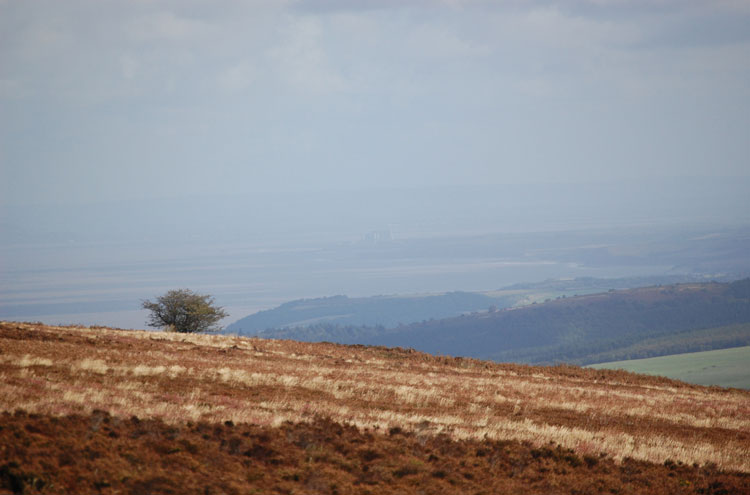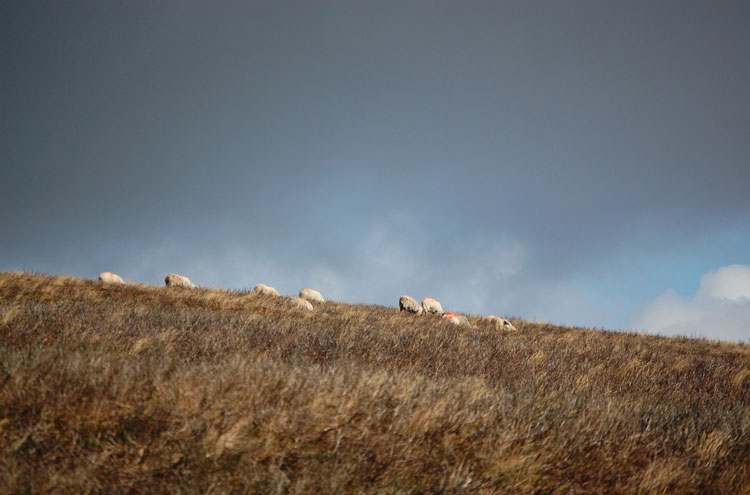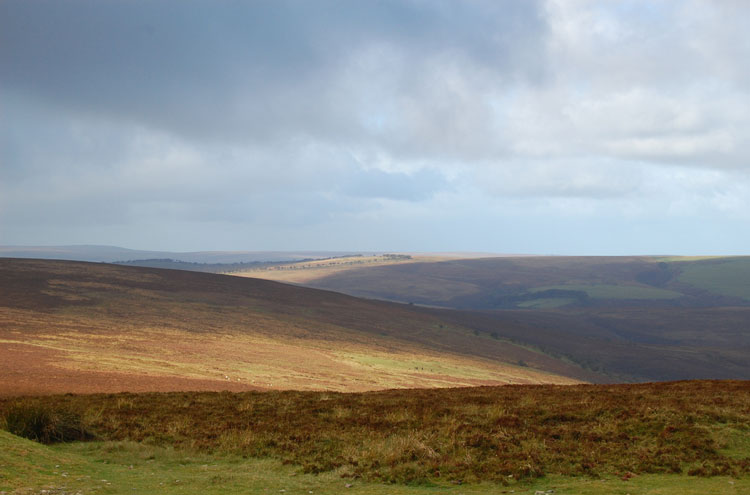Exmoor
Key information: Exmoor 
- Endless walking opportunities in this unique and magical landscape.
- While the South-west Coastal Path is the most famous walk here, the opportunities are endless.
Walkopedia rating
- Walkopedia rating87.5
- Beauty31
- Natural interest14.5
- Human interest11
- Charisma31
- Negative points0
- Total rating87.5
Vital Statistics
- Length: Your choice
- Maximum Altitude: 519m
- Level of Difficulty: Variable
WALK SUMMARY
Exmoor is a unique landscape, in world as well as British terms. Highish and flattish grass and heather (and bracken) moorland is riven with deep wooded valleys, the mid-levels a patchwork of small pasture fields, divided by old walled banks and ancient beech hedges and narrow lanes which are similarly enclosed.
Its northern flank falls sharply into the Bristol Channel, with huge cliffs, beautiful coves and some characterful towns nestled in wooded slopes and rocky drama; it is explored by the North Devon Coastal Path, which is a section of the famous South West Coast Path.
Views are often priceless, whether across the Devon lowlands to Dartmoor or out over the sea to Wales, or up the meandering folds of some ravishing little upland valley.
The moors are grazed by deer and native Exmoor ponies and surveyed by a selection of raptors.
The villages and towns have history and charm, and the whole area enormous character.
Long-distance trails
The world-famous walk here is the North Devon Coastal Path section of South West Coast Path, which spends 2-3 days winding along the northern coast in what some claim, not unreasonably, to be one of England’s best walks. Always attractive and interesting and often ravishing, it is a form of walking bliss, whether for the day walker or the long-distance merchant. Sections not to be missed for shorter walks are described below.
The other long-distance trail is the Two Moors Way which heads south across Exmoor, from Lynmouth to Simonsbath to Withypool to Hawkridge to Knowstone (or vice versa); then crosses the central lowlands to tackle Dartmoor. A wonderful 2-3 days across Exmoor, or you can make top-notch day walks on stretches of it (see below).
Day walks
There is endless scope for inspiring shorter walks, whether across the high moorland or little green fields, or along a charming riverbank in deep beech-filled valleys. You can pick any footpath from the map, and are likely to be delighted.
Well-known or particularly fine walking includes:
Dunkery Beacon: a nice but not wildly remarkable steady climb to Exmoor’s highest point is rewarded by gorgeous views, including a wide panorama over the Bristol Channel. You can then make a good swing round the seaward slopes and back round the eastern shoulder to the carpark on the south side. There are plenty of even more exciting ways to approach Dunkery, especially by following the long high ridges to its east or west, Walkopedia’s preferred options.
The valley between Simonsbath and Withypool is a most beautiful and charming stretch of landscape, as its active stream meanders along its narrowish and in places wild valley, through meadows below often heathery hillsides.
The ravishing Barle Valley below Withypool laughs its way through beech woods and meadows, past the famous prehistoric Tarr Steps, where it crosses the river to climb and traverse to Hawkridge, whence it drops along a lovely ridge back to the river and wends its way down, eventually, to Dulverton. A gorgeous but (the first half, particularly) well-known walk, so you won't be alone.
These are both stretches of the Two Moors Way.
Even wilder is the high ground north-west of Simonsbath. You can make all sorts of circuits here, but should try to take in the leg of the Two Moors Way first as it climbs Cheriton Ridge from the little fields above the wooded coastal slopes near Lynmouth, then drops into a delightful upland valley to climb to the high watershed of the northern highlands of Exmoor, topping out at – gasp – 480m, before dropping to Simonsbath in the meltingly pretty Barle Valley. It commands superlative views of both high moorland and the sea.
Coastal: stretches of the North Devon Coastal Path make for brilliant day walks.
Lynton to Combe Martin: The first part of this section is on a heavily walked tarmac path, for good reason, as it has beautiful views and visits the decidedly peculiar Valley of the Rocks. Thereafter it is very special, winding above Lee Bay, then on generally excellent paths along the wooded mid-slopes to drop into the deep and steep-sided Heddon Valley. Beyond here it is more beautiful coastline (the best of the lot in Walkopedia’s opinion) to charming Combe Martin. Various circuits can be made – for instance, from Hunters Inn (in the deep, narrow Heddon Valley) eastward above the steep sea-slope to the Martinhoe Roman Fortlet and back along the North Devon Coastal Path on mid-slopes. 8km/5miles.
Porlock to Lynton: A superb walk high above the sea, much of it on steep slopes above vast sea cliffs. Colebridge wrote Kubla Khan above Porlock. Drop to wide Lynmouth bay, stopping to enjoy this nice (if touristy) town, which was devastated by a flood in the mid C20. Then climb to Lynton above it.
The hills between Minehead and Porlock: Climb steeply on the Costal Path onto the high (well, 1,000ft) hills west of Minehead, for sea views, atmosphere and historical trekking galore. 12km/7.5 miles. Lots of different circuits can be made here.
Other accounts: share your experiences
Your comments on this walk, your experiences and suggestions, and your photos are very welcome. Where appropriate, you will be credited for your contribution.
We have a lot of helpful practical information and tips about this walk, covering everything from the best books and maps, to timing and weather, geting there, possible problems, whether you need a guide and where to find them, and useful websites. This section is only open to members.
Membership is FREE AND JOINING TAKES 30 SECONDS. To login or sign up click here
Safety and problems: All walks have inherent risks and potential problems, and many of the walks featured on this website involve significant risks, dangers and problems. Problems of any sort can arise on any walk. This website does not purport to identify any (or all) actual or potential risks, dangers and problems that may relate to any particular walk.
Any person who is considering undertaking this walk should do careful research and make their own assessment of the risks, dangers and possible problems involved. They should also go to “Important information” for further important information.
Anyone planning an expedition to this place should see further important information about this walk.
Safety and problems: All walks have inherent risks and potential problems, and many of the walks featured on this website involve significant risks, dangers and problems. Problems of any sort can arise on any walk. This website does not purport to identify any (or all) actual or potential risks, dangers and problems that may relate to any particular walk.
Any person who is considering undertaking this walk should do careful research and make their own assessment of the risks, dangers and possible problems involved. They should also go to “Important information” for further important information.
OTHER ACCOUNTS
share your experiences
Add your experiences, suggestions and photos. We would be delighted to receive your writing and ideas (which will be attributed appropriately where published).
Anyone planning an expedition to this place should see further important information about this walk.
Responsible travel matters, a lot. How you travel will make a real difference - for better or worse. PLEASE consider this when making plans. Read more








